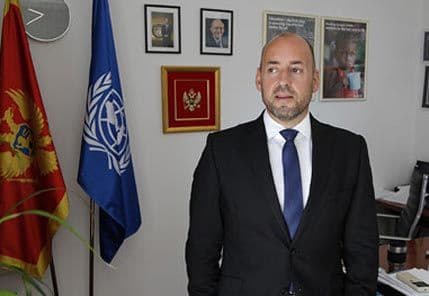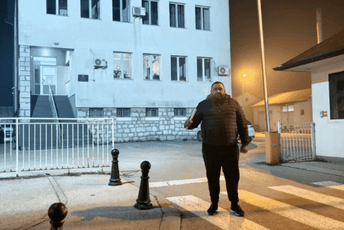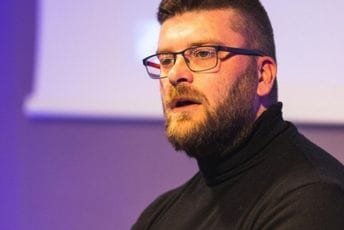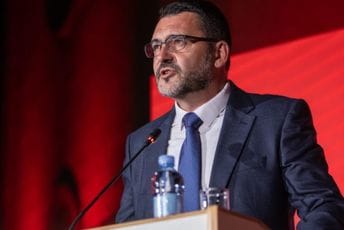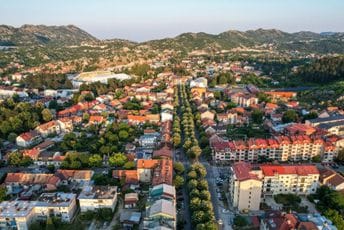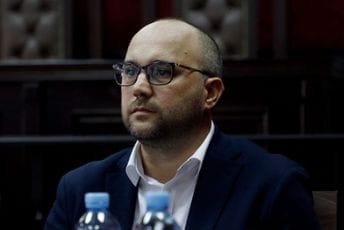ANALITIKA: On the beginning of the year, UNICEF and the Faculty of Political Science the child rights syllabus aimed at developing responsible news reporting skills that respect child rights. How would you estimate media reporting in Montenegro on issues related to children? Is there any plan for organising trainings for upgrading skills and knowledge of journalists about the rights of child rights?
PERKS: Dignity and respect of the child should be at the heart of all reporting on children. This has improved in recent years - for example the media now routinely protects the identity of children in conflict with the law. The visit of the UN Special Rapporteur on Freedom of Expression Mr Frank LaRue last month however did raise concerns about violation of privacy and protection of children in Montenegro - for example vulnerable children in institutional care settings are regularly unnecessarily exposed in the media.
The syllabus is aimed at systematically ensuring young journalists entering the profession have a good understanding of children’s rights and are able to make good decisions about how they promote this in their work. We are also constantly exploring ways about how we can contribute to development of media institutions in general and will be providing trainings and other events with the media to contribute to systematic improvements in coverage and protection of children.

ANALITIKA: At the end of May, UNICEF and Ministry of Education presented the publications developed within the “Schools Without Violence” programme. However, we were witnesses of frequent peer violence in schools this year. How should Montenegro tackle problem of peer violence in schools and who should be involved in eradication of this problem? How do you estimate situation regarding peer violence in our country and what are the things that influence this phenomenon?
PERKS: There is no comparative research on how peer violence levels compares with other countries-but there are certainly no indicators that it is at a higher level here than elsewhere. We will launch findings of a national study on violence against children in partnership with the parliament in October which we hope will stimulate a nationwide debate about how we want to protect our children from violence.
In any situation where the state has responsibility for children, there has to be clearly defined and standardized response and prevention mechanisms for violence and harm. When children are in school-the state is responsible for their wellbeing. In a modern state-the education system is also an integral part of the child protection system and must do everything in its power to protect children - working alongside the police, social protection and health as well as justice sectors to create a protective environment for children. We are not just talking about physical violence but also emotional violence, group isolating and cyber bullying all of which can have a devastating impact on the emotional wellbeing of children.
We have supported the piloting and a manual for a School without violence programme which provides school heads and teachers with systematic tools to prevent and respond to violence when it occurs in and around schools. We hope eventually the Government will expand the programme to all schools in the country.
ANALITIKA: You have been UNICEF Representative to Montenegro as of 2011. How do you estimate current situation in Montenegro when it comes to child rights and where do you see the space for additional work and efforts?
PERKS: Globally, the most widely used indicator for measuring any country's success is the child mortality rate, which measures the number of children per 1000 who don’t survive to reach the age of 5. In Montenegro this has reduced by two and a half times in the past two decades and is driven not just by health sector performance but also by reduced poverty, improved nutrition and sanitation and parental practices. It is interesting to note that we are ahead of Bosnia and Former Yugoslav Republic of Macedonia, level with Serbia and behind Croatia in child mortality rates as can be seen in the Montenegrin language version of the recent State of the World’s Children.
In addition most of Montenegro's laws have been aligned with the Convention on the Rights of the Child and other international human rights instruments and now the systems that implement those laws need to be strengthened. Urgent priorities are enabling the child protection system to protect children from violence and abuse and prevent them from being abandoned in institutions, increasing pre-school attendance across the country and improving learning outcomes of all primary schools and inclusion of all Roma children and children with disabilities in classes and introducing international protocols to govern performance and practice in the maternal child health sector-particularly related to birth and delivery.

ANALITIKA: At the end of March, the first national data base on child protection in Montenegro has been presented in order to provide reliable data on the situation and needs of children, as well as of protection measures and services provided to them by the social welfare centres. What do the data, collected so far, tell you?
PERKS: The child protection system database does not tell us about the situation and rights of children in general, but rather about those children who come into contact with the child protection system. The system came online a few months ago and data is currently being uploaded and used for individual case management, however we will not be able to properly analyse trends until the beginning of 2014. On the general situation of children, we have significantly increased the generation of knowledge and evidence, most importantly in collaboration with MONSTAT. We are currently finalising the 2013 Multiple Indicator Cluster Survey (MICS) covering over 5000 households and with 103 indicators on all aspects of child and family wellbeing. We have also launched international standard studies on child poverty, Roma exclusion and data on children extracted from the census and attitudinal surveys on inclusion of children with disabilities, violence against children and other topics.
The increased analysis on children illustrates overall improvements, with persistent pockets of disparity and inequity. For example Montenegro has deep inequity on pre-school education coverage for children between 3 and 6 years. Pre-school education, is now globally recognized as essential for ensuring optimum learning in primary and secondary as well as long term productivity in the labour market and the EU target for pre-school coverage is 95%. Yet a child born into the poorest 20% of the Montenegrin population is 10 times less likely to go to kindergarten than one born into the top 20% and a child born in Rozaje is ten times less likely to go to a kindergarten than one born in Kotor. The question for policy makers here is how do we prevent an intergenerational cycle of poverty-as was also uncovered in our recent Child Poverty Study.

ANALITIKA: In cooperation with several institutions, UNICEF organised training for experts for providing support to foster families in Montenegro, in contribute that every child in Montenegro grow in safe and warm family environment. What is going on with fostering in Montenegro? How it can and should be promoted? How could the citizens of Montenegro be stimulated to embrace the role of a foster parent?
PERKS: Massive question! There are around 300 kinship care placements of children within the extended family but only 14 children placed in foster care outside the family. We need to increase the number of non-kinship foster carers to prevent children who cannot be cared for in the family from being placed in large scale institutions-which we know has a devastating impact upon their lives. We will launch a large scale campaign to explain this to the public in September and I suggest that you wait until then to see the campaign. Fostering can be a very rewarding experience and providing a loving, caring and warm home to a child that really needs you is a very decent and honest way of serving the community.
As reflected in the new Law on Social and Child Protection, foster care expansion is one primary goal. The Strategy on the Development of Fostering in Montenegro was adopted in 2012. As you mentioned, selected professionals from all centres for social work in Montenegro have been trained in assessing and supporting foster families and matching foster families to the needs of the child. A mass media campaign on fostering called “Every Child Needs a Family” will be implemented this autumn. The aim of the campaign is twofold: to raise public awareness on the devastating and life-long effects that placement in large scale residential institutions has on a child’s growth and development, and to promote fostering in Montenegro.
ANALITIKA: In Montenegro there is an institution for children without the parental care. What is your opinion on institutional care for children? What are advantages and what disadvantages of such children treatment?
PERKS: There are around 250 Montenegrin children in institutional care, about half of them are in the institution you mention and the others live in specialized institutions such as Komanski Most and in some cases in institutions in Serbia. We share the government’s view that children should no longer be placed in institutional care and that alternatives need to be established. There are three alternatives to be promoted: 1) stronger efforts to keep the biological family together through interventions in maternity wards and through social work centres 2) Expansion of Foster Care and 3) Small Group homes which have between 6 and 8 children living there and which try to replicate family life.
In the very first weeks and months of childhood, children absolutely need one on one care. When the parent cannot care for the child -another adult can provide this care. Institutions cannot because-despite the fact that the staff there are often very dedicated and caring-the staff/child ratio does not allow any more than a fraction of the attention that a child needs.
Most EU members states immediately place such children into emergency foster care until a more long term kinship or non-kinship foster care or family reunion solution is found. When a child goes into a large scale institution, you are essentially cutting off that child’s right to one and one care and destroying their emotional wellbeing with potentially long term consequences. Placing a young child in a large scale institution is therefore simply wrong.
Over the past sixty years, research across Europe and the United States has demonstrated the harm caused by institutionalisation. It is now widely accepted that it is a contravention of basic human rights to put a child-particularly under 3 years-into a large scale institution. The countries of central and Eastern Europe have one of the highest rates of institutionalization in the world and have recently signed a pledge to end placement of children under 3 in institutional care in collaboration with the European parliament, the UN Office of the High Commissioner for Human Rights and UNICEF. Indeed the Government of Montenegro has put the eradication of placement of children under 3 in the new Law on Child and Social Protection.
ANALITIKA: Which role the UNICEF has in Montenegro, and do you sometimes face situation that citizens, and institutions as well, expect from you something that is not in your authority?
 PERKS: There are two roles. The role of the UNICEF Representative is to be a UN Human Rights diplomat and to negotiate and advocate for the best outcomes for children and for fulfilment of the Convention on the Rights of the Child (CRC) and other instruments. But also the UNICEF office has the responsibility of providing technical support to government and civil society in delivering the very complex reforms which will enable fulfilment of Montenegro’s obligations on the CRC.
PERKS: There are two roles. The role of the UNICEF Representative is to be a UN Human Rights diplomat and to negotiate and advocate for the best outcomes for children and for fulfilment of the Convention on the Rights of the Child (CRC) and other instruments. But also the UNICEF office has the responsibility of providing technical support to government and civil society in delivering the very complex reforms which will enable fulfilment of Montenegro’s obligations on the CRC.
Child protection systems are as complex as missile defence systems! There is sometimes a tendency to think everything to do with children is simple. We try to bring world class thinking, the best available global research and practice and system diagnosis methodologies to help Montenegro address the real obstacles and barriers to ensuring child survival, development and protection. We use this to help the Government deliver long term and irreversible systemic change for children now and for future generations. Everything we do also has to be based on clearly defined results such as percentage increases of the number of children with disability or Roma in schools or a decrease in the number of children in institutional care. We are here to make a difference-not just to do a few activities here and there.
On what we cannot do. We generally cannot help individual cases, we also do not do humanitarian work as Montenegro has thankfully passed that stage. We cannot work on anything that does not have good problem diagnostics, a clear vision of intended results and an intelligent strategy-anything less is not good enough for Montenegro as it aspires for EU membership. We also get a lot of requests to engage in activities that we consider to be over-simplistic and often harmful, such as public parties or gift ceremonies for “deprived children” etc which in our view are degrading and serve the organisers more than the children. Finally there is a clear difference between a human rights diplomat and a human rights activist-our work is always within the rules of diplomacy, anything outside of that we cannot do.
ANALITIKA: Currently, which children groups have greatest needs in order for Montenegro to achieve progress in Millennium Development Goals (which are the most vulnerable groups)?
PERKS: Let’s look at Millennium Development Goal 3 on universal education and the 5% of children which the census tells us are out for school (Children in Montenegro). They represent 3 groups who also have poor outcomes in all aspects of childhood - not just education. They are children with disability, Roma and Egyptian children and economically poor children in the rural north.
For children with disability we need proper detection and assessment systems in early childhood, inclusive schools, day care centres and social protection services and an end to stigma. For Roma and Egyptian children we need to recognize that despite millions invested in 20 years in south east Europe - primary school completion rates remain shamefully low-and they are just one proxy indicator for poorer social, health and education outcomes throughout childhood. I think we need better problem diagnostics on the cultural and traditional barriers to Roma inclusion and a more concerted effort across different sectors to respond to the multiple factors that keep them excluded-this is a problem for all countries in South East Europe - not just Montenegro. There is a broader question about what happens to children in poor rural areas as the population ages and reduces, provision of basic services for fewer and more disparate populations is hard to manage and we know from the Child Poverty Study last year that many of the poorest children live an average of 12 km from the nearest primary school but have no means of transportation. If we could have an energetic and renewed drive to get universal primary school completion it would galvanise progress in many other areas as well.
From a human rights perspective, a really urgent problem is to bring an end to the placement of children under 3 in large scale institutions for reasons I have stated in answering the questions above. I am glad the Government has committed to this and we need to engage the whole of society in making sure this practice is stopped as quickly as possible.
Photo by Balša Rakočević
Kristina ĆETKOVIĆ

